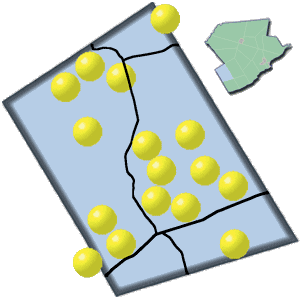|
About Polk Township
Overview
Polk Township is a Pennsylvanian township located right in the western portion of Monroe County. It was first established in September 1846, when a portion of the township was removed from Chestnuthill Township. The township's name originates from President James K. Polk, who was seated in office around the time of its establishment.
Since then, Polk Township developed into a semi-rural area that hosts a wide variety of people originating from around the country and around the world. Thanks to the beautiful natural surroundings, residents naturally enjoy their time right in the township.
This township extends over 31 square miles of forests and rolling pastures, nestled right in between the Kittatinny Ridge and the Pohopoco Mountains in northeast Monroe County. The earliest road that ran throughout Polk Township was the State Route, now known as Route 209. The largest village was located in Kresgeville.
Some choice locations include the local Historical Society, the Veterans Committee, Crime Watch, the Aquashicola Pohopoco Watershed Conservancy. The Township also hosts the Black Bear Triathlon and Ragnar Relay each year.
Polk Township Today
In Polk Township today, over 7,000 people live throughout the region. Residents and vacationers prefer the region for its relatively mild climate of mild spring-summer and cool fall-winter seasons.
With recreational and living resources located nearby, Polk Township is more or less considered an ideal township for a variety of people, especially families looking for Pocono homes. Thanks to its proximity to the Pocono region, it hosts a fairly burgeoning Pocono real estate scene.
History
Throughout the mid 1700s, settlers known as Moravians settled into the area from Bethlehem, Pennsylvania after leaving Europe due to religion-related persecution.
According to local data, Polk Township's early development appeared to be a 'turbulent one,' due to skirmishes between the Native American people living there and the settlers. Many of these settlers were of German and Polish descent; this contingent still maintains a large presence throughout the area today.
The first known European settler in the region was Phillip Shupp, who eventually built a small home from logs around 1750. Early settlers later settled throughout the fertile land encompassing Polk Township, attracting farmers who wanted to cultivate the land.
Throughout the century of Polk Townshop's establishment, tensions loomed over the early settlers. Since Native Americans still lived throughout the rich lands, tensions between settlers and Natives eventually escalated to higher levels, during the French and Indian Wars throughout 1756 to 1763.
| 

